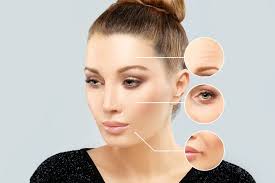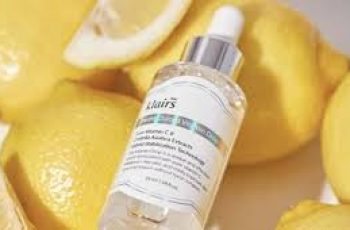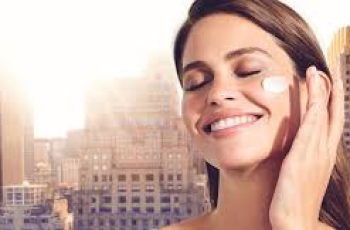
Understanding Botox: Its Mechanism of Action and Treatment Targets
What is Botox?
Botulinum toxin, also known as botulinum toxin type A, is a protein produced by Clostridium botulinum.
When cells in a culture of Clostridium botulinum break down, they release the toxin, which is then purified and processed for medical use.
Botulinum toxin is frequently used in cosmetic procedures to reduce wrinkles. Botox and other botulinum toxins are not used in topical skin care products, but there are many other topical anti-aging strategies.
Botox Cosmetic, often shortened to “Botox,” was first introduced in 1981 for cosmetic purposes and was FDA-approved in 2002 for the treatment of frown lines.
If you’re looking for an anti-aging product to enhance the effects of your Botox injections, take a free Bowman Skin Type Test today and get comprehensive treatment recommendations!
How does Botox work?
Botulinum toxin targets the SNAP-25 protein, which is essential for the release of acetylcholine, a neurotransmitter for muscle contraction.
By breaking down SNAP-25, Botox prevents muscle contraction, which reduces wrinkles and makes skin appear smoother.
How long do the effects of Botox last?
The effects of Botox are temporary, typically lasting three to six months. The duration depends on how quickly the body regenerates the SNAP-25 protein.
Throughout my career as a dermatologist, I have observed some anecdotal patterns regarding which people Botox works the longest.
Factors such as a healthy lifestyle, exercise, and a protein-rich diet can speed up the regeneration of SNAP-25 proteins, potentially shortening the duration of Botox’s effects.
While there are no studies to support this hypothesis, I have observed that the more active and fit you are, the faster the effects of Botox wear off.
Benefits of Botox
In addition to its cosmetic benefits, Botox can be used to treat a variety of conditions, including hyperhidrosis (excessive sweating), chronic migraines, and muscle spasms.
Its muscle-relaxing effects make it a valuable agent in the fields of dermatology and neurology, with new indications being reported frequently.
Side Effects of Botox
Common side effects include pain or bruising at the injection site, headaches, and temporary muscle weakness.
In rare cases, more serious side effects such as difficulty breathing or swallowing may occur. It is important that Botox injections should only be performed by doctors and trained medical staff.
How much do Botox injections cost?
The cost of Botox depends on the area treated and the dose required. Prices range from $200 to $800 per session, and factors such as location and provider experience can affect the cost.
Different providers charge different fees, depending on many factors such as location, reputation, and the qualifications of the injector.
Be sure to consider the reputation of the provider when setting your price.
Do Botox injections hurt?
Injections are usually quick and cause minimal discomfort. Some patients experience a slight sting, but the use of a fine needle and optional numbing cream can ease the pain.
Which doctors can inject Botox?
Botox injections should be performed by a licensed physician who has experience injecting Botox, such as a dermatologist or plastic surgeon.
In some states, physician assistants, nurse practitioners, dentists, and estheticians (in Texas and Arizona) are allowed to inject these toxins.
However, proper training and expertise are essential for safe and effective treatments.
However, there are also some people who are authorized to perform Botox injections without adequate training and do not understand facial anatomy and the safety aspects involved.
What Dermatologists Think About Botox
Botulinum toxin is a popular cosmetic treatment because it can smooth wrinkles and make people look younger.
Botulinum toxin is safe and well-researched when used correctly by trained medical professionals.
Understanding how Botox works and what effects to expect will help you make an informed decision about this treatment.
Always consult with your doctor to make sure you need Botox and that it is being used correctly.
Botulinum toxin
Botulinum toxin in skin care
Botulinum toxin is the best-known type A botulinum toxin (BTX-A) used in skin care. However, there are various other formulations of BTX-A, each with slightly different properties.
Botulinum toxin type A injectables (11 types) approved by the FDA for the treatment of wrinkles such as frown lines include:
Botulinum toxin (onabotulinumtoxinA)
Dysport (botulinum toxin type A)
Xeomin (botulinum toxin A)
Jeuveau (prabotulinumtoxinA)
Daxxify (DaxibotulinumtoxinA-lanm)
Dysport (botulinum toxin A)
Dysport is similar to Botox but has a slightly different formula. It is often used for the same cosmetic purposes as Botox, such as treating wrinkles and fine lines.
Most cosmetic injectors state that 1 unit of Botox is equivalent to about 2.5 to 3 units of Dysport.
Xeomin (botulinum toxin A)
Xeomin is unique in that it contains only pure neurotoxin without any additional proteins, which reduces the risk of developing resistance.
It is often used to treat frown lines and other facial wrinkles. Clinical studies have shown that Xeomin has similar efficacy and safety profiles to Botox, and the duration of action is comparable.
Jeuveau (prabotulinumtoxinA)
Jeuveau is a newer botulinum toxin developed specifically for cosmetic use. It has a similar molecular structure and mechanism of action to Botox.
Jeuveau has been shown to be effective in reducing glabellar lines (wrinkles) and has a similar safety profile to other botulinum toxins.
Comparison of Botulinum Toxins
Comparison of Botulinum Toxins
Although all botulinum toxins work similarly by attacking the SNAP-25 protein and preventing muscle contraction, they vary in their specific structure, speed, and duration.
Choosing the right botulinum toxin depends on several factors, including the area to be treated, your goals, and your sensitivity.
It is important to consult with an experienced physician to determine which botulinum toxin is best for your specific needs.
Conclusion
Botulinum toxin is just one of several botulinum toxins used in skin care because of their muscle-relaxing properties.
Dysport, Xeomin, and Jeuveau are also well-known alternatives that each have their own pros and cons.
Understanding the differences between these toxins can help you make an informed decision when considering a botulinum toxin treatment.
Thank you for visiting this blog about botulinum toxin. I hope you now understand a little more about the science and safety of the popular anti-wrinkle injectable.
If you have any questions or comments, please leave a comment below! Be sure to take our Skin Type Test to improve your skin health!
Remember: increasing collagen levels through proper skin care can improve the results of cosmetic treatments.
DQH Knowledge drop: In your 20s, your skin cell turnover decreases. (Cell turnover is a key component in keeping your skin youthful.) You know what else slows down? Your collagen production. Starting in your 20s, collagen decreases by about 1 percent per year. Should you want to prevent fine lines and wrinkles, start by eliminating behaviors that contribute to premature aging. “If it’s bad for you, it’s bad for your skin,” says dermatologist Michel Somenek.
“Cigarette smoking reduces blood flow to the skin and causes premature wrinkling and a dull skin texture. Making the repeated pursed motion to inhale can also cause smoker’s lines. Alcohol and recreational drugs are toxins for the skin that damage its cellular structure and DNA,” Somenek tells us. “The faster you eliminate vices while you are young, the better chance your skin and body have to recuperate.” Also, adopting an anti-aging routine in your 20s is key. After all, the best offense is a good defense. We spoke to Somenek and experts Joshua Ross and Audrey Kunin to find out more.
Keep reading for the best anti-aging products for your 20s, according to skincare professionals.
Sunscreen
“We all know that the sun is the number one cause of skin aging and starting the prevention in your 20s is very important,” Ross says. “The majority of your sun damage won’t start to appear until you’re in your 30s, so don’t wait until you see it surface or you’ll be behind the curve. Stay ahead of it with a good-quality zinc-based sunscreen worn daily.”
Farmacy Green Defense Daily Mineral Sunscreen
An invisible sunscreen with SPF 30, plus botanical extracts meant to protect skin with tons of antioxidants. Bonus: It’s clean and fine to use under makeup.
Bareminerals Complexion Rescue™ Tinted Moisturizer Broad Spectrum SPF 30
Although we recommend you use your SPF and moisturizer separately, we also understand moments when you don’t have time or energy for that extra step. For those times, this bareMinerals moisturizer is a great thing to have on hand.
Vitamin C Serum
“A great introduction to anti-aging is to start with a vitamin C serum in your morning skincare routine,” Ross says. “It’s a powerful antioxidant that will neutralize free radicals and brighten the skin.” He adds that it’s a great way to counteract the effects of the sun’s harmful rays, which, as previously mentioned, are among the biggest causes of premature aging.
Drunk Elephant C-Firma™ Vitamin C Day Serum
The Drunk Elephant C-Firma is a lightweight serum that promises to give skin a glow by combining the brightening powers of vitamin C with ferulic acid, l-ascorbic acid, and vitamin E. The included sodium hyaluronate is meant to replace hydration loss, so you shouldn’t have to deal with any irritation.
Sunday Riley C.E.O. Rapid Flash Brightening Serum
This potent serum is jam-packed with vitamin C (15 percent, to be exact), which means it’s a potential superstar at both brightening skin and dousing it in antioxidants.
Peptides
Using peptides on your skin has many benefits, says Somenek. “The skin barrier is what defends the body against pollution, UV rays, bacteria, and toxins. It can be damaged by several everyday factors. Using topical peptides aids in building a stronger barrier,” he says. “Peptides comprise elastic fibers, which are a type of protein. These fibers help to make skin appear taut and firm. Peptides can also help repair damaged skin, relieve inflammation, and even out skin tone. Some peptides can kill acne-causing bacteria that is common in 20-somethings.”
Kunin agrees, saying, “Peptides are an excellent entry point for supporting collagen.” She recommends looking for face and eye treatments that contain these collagen-boosting powerhouses.
Charlotte Tilbury Magic Eye Rescue Cream
This Charlotte Tilbury super-emollient eye cream has a base of coconut oil and shea butter (read: it’s incredibly hydrating). Botanicals plus peptides are meant to help reduce dark circles and boost collagen, respectively.
This creamy moisturizer serves up potent collagen-boosting peptides and pycnogenol, and antioxidant-rich vitamin C. “Instead of sitting on top of the skin, peptides penetrate the outer layer so they go deep. The ‘signals’ they send tell the cells to produce elastin and collagen, which are needed for youthful-looking skin,” explains Somenek.
At-Home Peel Pads
Remember that skin cell turnover fiasco we talked about earlier? One way to help support it is by exfoliating. “Exfoliation is important to help keep skin fresh and luminous,” Kunin says. She recommends using at-home peel pads as an easy and effective way to exfoliate.
“The goal in your 20s is to fight the slowing pace of cell turnover. It is wise to use products that gently exfoliate, yet still remove oil and other impurities. Products that have Alpha Hydroxy Acids (AHA) or Beta Hydroxy Acids (BHA) are a good choice.”
According to Somenek, you should only exfoliate two to three times a week. “People of all ages are guilty of over-exfoliating and that can be too much of a good thing,” he says.
Dermadoctor Kakadu C Intensive Vitamin C Peel Pad
A few swipes of this Derma Doctor powerful peel pad promise to leave your skin glowing and smooth, thanks to the seven (yes, seven) types of chemical exfoliants, including AHA and BHA. It also contains vitamin C via Kakadu plum extract for added brightening and antioxidant protection.
KEY INGREDIENTS Kakadu plum extract is sourced from the Kakadu plum, a fruit grown in northern Australia. It contains vitamin C, which restores the skin’s natural barrier, increases collagen production, and soothes irritation.
Dr. Dennis Gross Skincare Alpha Beta® Universal Daily Peel Pads
These are the gold standard of peel pads, with a cult following and over 900 five-star reviews on Sephora. They’re easy to use and contain a blend of anti-aging exfoliating acids.
Emollient Night Cream
“In your 20s, you need to start upping the hydration in your skincare routine. You may have been cautious of over-moisturizing because of acne in your teens, but as you enter your 20s, your skin transitions and becomes drier,” Ross says. “I recommend an emollient night cream added into your evening skincare regimen.”
“Twenty-somethings need to make sure that they are not using creams that will clog their pores and cause excess oil production,” says Somenek. Opt for non-comedogenic products.
Cerave Skin Renewing Night Cream
One great choice is the CeraVe Skin Renewing Night Cream, which is a non-comedogenic night cream that leaves skin soft and glowy. It combines the moisturizing powers of ceramides and hyaluronic acid.
RoC Retinol Correxion Max Hydration Creme
“The best night cream ingredients contain retinol, benzoyl peroxide, and/or salicylic acid or hyaluronic acid. The goal is to moisturize, yet remove excess oil,” says Somenek. This Roc Retinol Correxion cream fits the bill as it contains both hyaluronic acid and retinol so it promises to moisturize while also being non-comedogenic.



